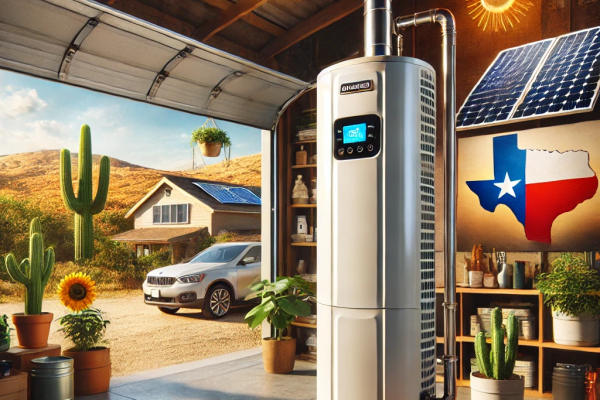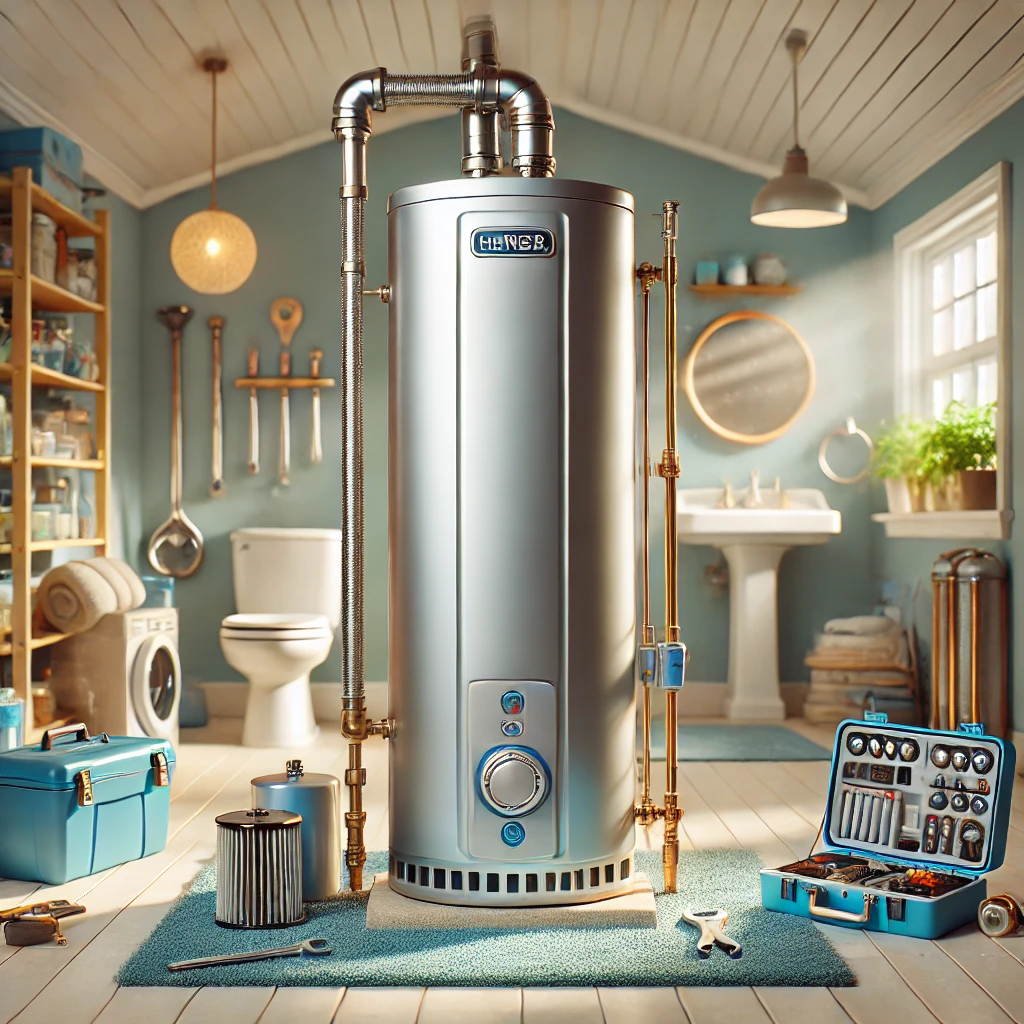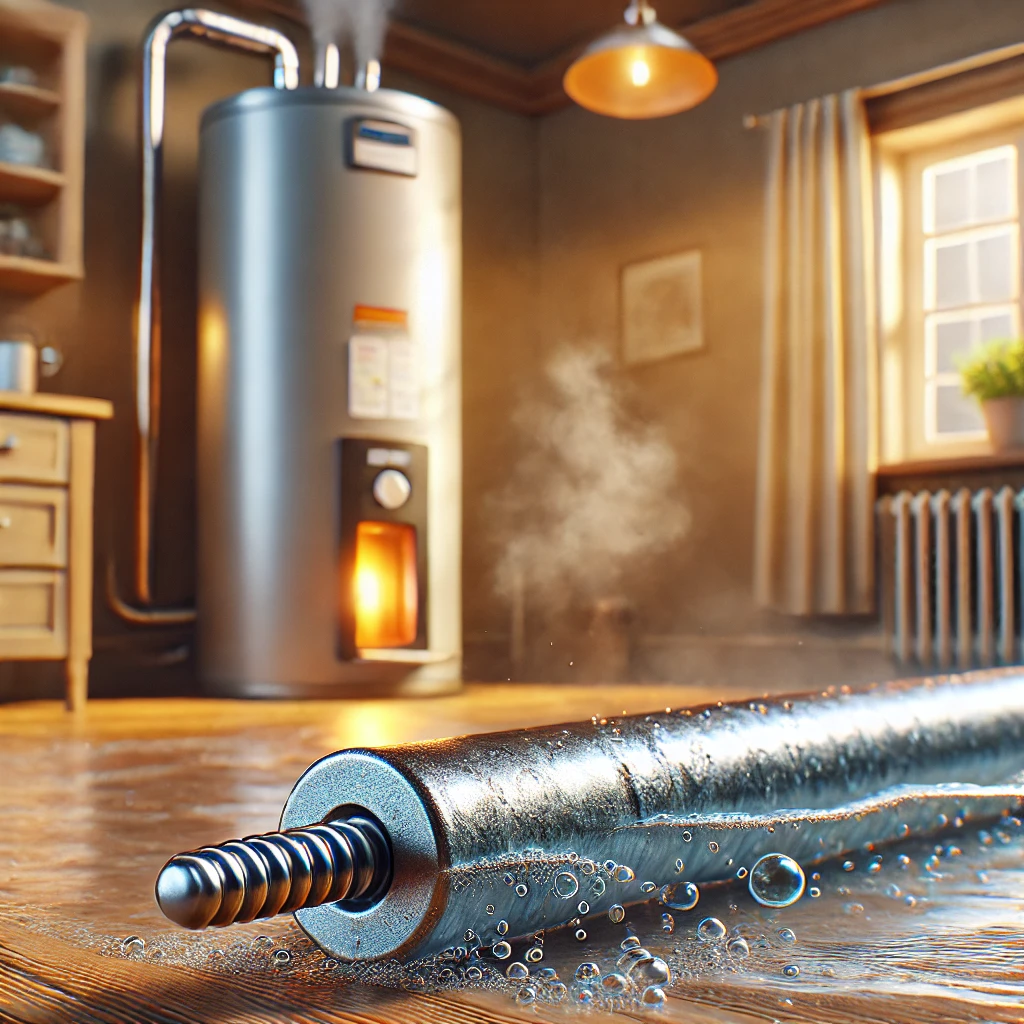
How the Inflation Reduction Act Can Help You Save on a New Water Heater
Your water heater is an essential, yet often overlooked, component of your home's appliances. It works tirelessly, ensuring hot water is available for showers, dishes, laundry, and other household needs. However, in hot climates like Texas, it also tends to be one of the largest energy consumers, contributing significantly to your utility bills. Fortunately, the Inflation Reduction Act (IRA) of 2022 provides an opportunity for homeowners to make their water heating systems more efficient and save on energy costs.
In this article, we’ll explore how the IRA can help you save on a new water heater and why it's a smart investment for Texas residents.
Why Water Heaters Are Key to Saving Energy in Texas
Water heating is the second-largest energy expense in most households, accounting for approximately 18% of total energy costs, according to the U.S. Department of Energy. In Texas, where summer temperatures soar, hot water usage is a daily necessity, which often leads to higher energy consumption. With utility costs on the rise, it’s essential to find ways to make water heating systems more efficient.
How Heat Pump Water Heaters Help Save Energy
One of the most effective ways to reduce your energy consumption for water heating is by installing a heat pump water heater. Unlike traditional water heaters that generate heat using electricity or gas, heat pumps transfer heat from the surrounding air to warm the water. This method can be 2-3 times more energy-efficient than conventional systems, offering substantial savings over time.
Key Features of Heat Pump Water Heaters:
Efficiency: Heat pump water heaters are up to 3 times more energy-efficient than traditional electric models.
Temperature Range: They perform optimally in ambient temperatures ranging from 40 to 90°F, making them ideal for most parts of Texas.
Space Requirements: A heat pump requires around 1,000 cubic feet of air space around the unit for efficient operation.
Cooling Effect: These devices can cool the surrounding air, making them ideal for installation in garages or storage rooms.
By upgrading to a heat pump water heater, Texas residents can not only reduce their energy bills but also improve the overall comfort of their homes.
Understanding the Inflation Reduction Act (IRA)
The Inflation Reduction Act was signed into law by President Biden in the summer of 2022 and is designed to promote the adoption of energy-efficient appliances, eco-friendly cars, and renewable energy solutions. Among the law’s provisions are significant incentives for homeowners who choose to replace their old water heaters with more efficient systems, such as heat pumps.
Key Provisions of the IRA for Water Heater Purchases:
Rebates: Homeowners can receive up to $1,750 in rebates for purchasing and installing a heat pump water heater.
Tax Credits: Tax credits of up to $2,000 are available to offset the cost of installation.
For Texas homeowners, these incentives can make upgrading to a heat pump water heater much more affordable. The rebates and tax credits can significantly reduce the upfront investment, making the transition to a more energy-efficient system accessible to a wider range of residents.
Why Now Is the Right Time to Replace Your Water Heater
While replacing a water heater can be a significant expense, there are several compelling reasons to consider upgrading now, especially with the IRA incentives.
1. Energy Savings
Old water heaters, whether electric or gas, may be inefficient, leading to unnecessary energy consumption. Modern heat pump models reduce electricity use, which is particularly important in Texas, where summer air conditioning loads already increase utility bills.
2. Lower Utility Bills
Upgrading to an energy-efficient heat pump water heater can reduce your monthly utility bills by 25-30%. Given the rising costs of electricity, this reduction can provide long-term financial relief.
3. Long-Term Savings
Heat pump water heaters have a higher initial cost, but their operating costs are significantly lower. Most homeowners will recover the cost of the unit in 3-5 years through energy savings.
4. Government Incentives
The IRA’s rebates and tax credits make this upgrade more affordable, making it an ideal time to switch to a more efficient water heating system.
How to Access Rebates and Tax Credits
To take advantage of the rebates and tax credits offered by the IRA, here’s what you need to know:
Tax Credits:
Tax credits are available through 2032 and can be claimed when you file your tax return. For example, if you purchase a heat pump water heater in 2024, you can claim the tax credit in 2025.
Rebates:
Rebates provide direct discounts on the upfront cost of installation. These programs may vary by state, and some may roll out gradually throughout 2024.
For Texas residents, rebate programs may be based on income level. According to CNBC:
Households earning less than 80% of the area’s median income could receive up to 100% reimbursement for installation costs.
Households earning between 80% and 150% of the area’s median income may qualify for partial reimbursement.
To learn more about available programs in your area, visit the U.S. Department of Energy website or consult local service providers.
Preparing for a New Water Heater Installation
Before installing a new heat pump water heater, here are some things to consider:
1. Assess Available Space
Heat pump water heaters require significant space to operate efficiently. Ensure you have adequate space around the unit—typically around 1,000 cubic feet. Garages and utility rooms are ideal installation locations.
2. Choose the Right Location
For Texas homeowners, garages can be an excellent location for installation, as they rarely experience temperatures below the unit's minimum operating range.
3. Set a Budget
Although the IRA incentives will help reduce upfront costs, it’s important to account for installation, potential system upgrades, and additional materials. Setting a realistic budget will ensure a smoother installation process.
4. Hire a Professional Installer
Proper installation of a heat pump water heater requires professional expertise. Work with licensed contractors to avoid errors and ensure the system is installed efficiently and safely.
Financial Assistance for Unexpected Costs
Replacing a water heater can be costly, especially if your existing unit unexpectedly breaks down. Fortunately, there are financing options available to help spread out the costs. For example, Benjamin Franklin Plumbing offers financing solutions through Ally Lending, which can help homeowners manage the expense of replacing or repairing their water heater.
Tips for Choosing the Right Water Heater for Texas Homes
When selecting a heat pump water heater, keep these tips in mind to ensure it’s the best option for your Texas home:
1. Consider the Climate
Heat pump water heaters are best suited for warm climates, making Texas an ideal location for their use. They are designed to operate efficiently in ambient temperatures ranging from 40 to 90°F, which aligns with the state’s climate.
2. Check Noise Levels
Some heat pump water heaters can be noisy during operation. Make sure to choose a model that suits your living situation and won’t disrupt your home’s comfort.
3. Compare Models
The market offers a variety of heat pump models. Research different brands and models to compare features, warranties, and efficiency ratings before making your decision.
4. Evaluate Long-Term Savings
While the upfront cost of a heat pump water heater may be higher than a traditional system, the long-term savings on your energy bills will make it a worthwhile investment.
Conclusion: Why Upgrading to a Heat Pump Water Heater Is Smart for Texas Residents
Replacing your water heater with a more energy-efficient model like a heat pump water heater can have significant long-term benefits. Not only will it help you save on utility bills, but it can also improve the comfort of your home, reduce your environmental footprint, and increase your home’s energy efficiency.
The Inflation Reduction Act makes this transition even more affordable by offering tax credits and rebates that reduce the upfront costs of installation. Don’t wait for your old water heater to break down—take advantage of these incentives today, and start saving tomorrow.
To make the most of this opportunity, contact a licensed professional and start your journey toward a greener, more cost-effective home.






